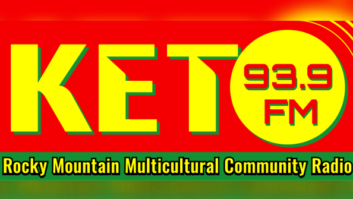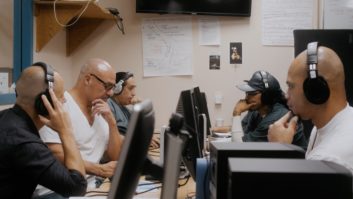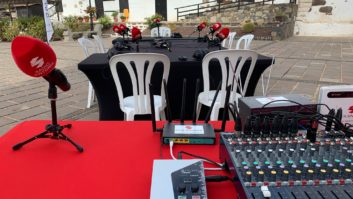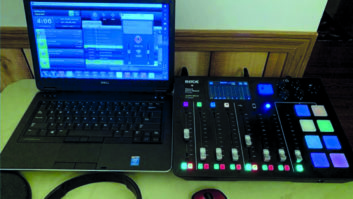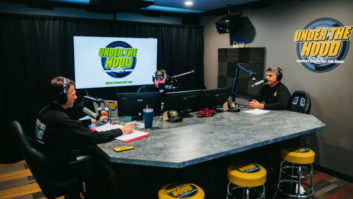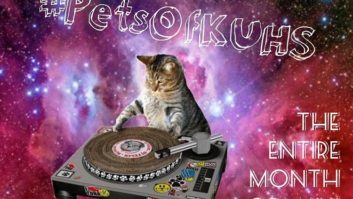You don’t need someone sitting by the board 24 hours a day to sound “live and local.” It’s admirable that many small stations want to use this type of format; but it pains me to see them struggling and going out of business because of it; they just can’t afford it.
Over 29 years at KLQP(FM) we have found a lot of tricks that can make you “live and local” on a shoestring budget. I hope you find some of these tips to be useful. Some of the ideas can’t be used in every market, but I believe there are a few here that even major-market stations could use to offer something a bit different than the competition. First, I’ll give you the basics of our 25 kW commercial FM station.
We don’t use a satellite music service, we use music on hard drive, all done in-house, and we run 24 hours a day with a Smarts Broadcasting System Skylla automation unit. We air CNN Radio News on the hour, Minnesota News Network regional news on the half-hour and ag reports regularly from the Linder Farm Network, a statewide service here in Minnesota.

The author, right, talks in the main studio with Paul Raymo, station sports director and sales rep.
Our city of license has a population of about 1,500 people (not a typo!). We serve about a half dozen towns of similar size nearby. A couple of regional shopping communities of about 20,000 population are found at the outer edges of our coverage area, which covers around seven counties in Western Minnesota and Eastern South Dakota.
A station, not a jukebox
Now that you know who we are and where we are, let me tell you how we do things here.
We don’t waste our time voice tracking or back-announcing songs. Our listeners seldom complain and this practice results in no direct monetary return to the station. Your time can be better spent doing things that could make some money.
We treat music as something we use for filler when we don’t have enough commercials or other things to talk about. Serious music should be left to iPods and satellite radio. Remember, you’re running a radio station, not a jukebox.
We will, however, take listener requests for anything from polkas to Taylor Swift to Bon Jovi! We have fun with our format, which is true variety. Our listeners tell us they enjoy listening because they never know what they’ll get next (which is more than you can say for those stations that stick to a repetitious playlist day in and day out).
Let your listeners determine what kind of music they want to listen to once in a while. Don’t always decide it for them.
Take advantage of the time announcement feature in your automation system and record the times using your own announcers. It takes a while to record 720 time announcements, but people are amazed that I’m giving the time at 3 a.m. Incidentally that’s 1,440 announcements to record if you differentiate between AM and PM, but I think most listeners can figure that out on their own.
People like to hear the time. It’s important to have your radio station help keep them on schedule.
If you use a commercial weather service to update your forecasts automatically, be sure to use their current conditions feature if they offer it. People want to know the temperature, especially if they live in Minnesota! If you don’t use their current conditions, at least get on the air yourself and give the conditions once in a while.
Local talent
It’s better to develop your own play-by-play announcers from local sources. Retired coaches, enthusiastic fans, even high school students can turn out to be great announcers. You are better off using local announcers than you are trying to bring in “the best professionals money can buy.” Local listeners don’t want polished professionals, they want to have fun listening to people they know and people with whom they can identify … people who actually know the kids out there playing.
We record the games and offer them as podcasts for those who may have missed them. We air two or three high school games every week, sometimes more, sponsored by a list of local “Sportsbooster” businesses a mile long. We don’t concentrate on one specific school, we rotate several schools within about a 50-mile radius. We cover everything from football, basketball, baseball and softball to cross-country and varsity dance line.
Record several announcements for local happenings — benefit dinners, meetings, etc. Put two or three on a cut and program them to rotate periodically throughout the day. Update them daily.
Record a cut with local birthdays and anniversaries. Use it as filler periodically throughout the day. One of the best ways to show a local advertiser (or potential advertiser) how many listeners you have is to put his or her birthday on the air.
Record your local news on a variety of cut numbers and change them around a bit during each newscast. We run local news four times a day.Each newscast is different and I don’t have to re-record it every time (no one has to be sitting live at the mic for any of them).
Local obituaries are included in our local news; that fills an important gap in service in rural areas where there are only weekly newspapers. If you die on Wednesday and your funeral is on Saturday, without local radio no one will know you’re dead until the following week and they’ll feel bad because they missed your funeral!
Pay attention
Don’t let the automation system run your life. Put in on pause once on a while and actually do some things live.
We do a live weekly question-and-answer call-in show with a local computer guy and another with a local gardening shop. We air another show featuring the local veteran’s service officer … one with a local librarian … one with the guy at the local sporting goods store to talk local hunting and fishing … and the list goes on and on. Most of those programs are sponsored.
When you are running your automation, you still have to pay attention to what your radio station is doing. It amazes me how many operators apparently walk out the door at 5 o’clock on Friday afternoon and don’t pay any attention to anything at station until they return on Monday morning. You’ll know these stations when you hear them — or maybe I should say when you don’t hear them, because they broadcast a lot of dead air.
On Sunday morning we air hour-long worship services from three local churches. One is live via the phone line, another is recorded via phone line and delayed, while the third is recorded at the church and hand delivered for later playback.
In the day of Craigslist and eBay, you should definitely be running a program allowing listeners access to some kind of radio “classifieds” to buy and sell personal stuff. We call ours the “Rummage Report.” Listeners send the items to us via mail or e-mail, we record it and update it three or four times a week. The program runs twice daily with a commercial sponsor. It’s free to listeners if their item is valued under $100; we have a handling charge of $5 to $10 for larger items. Listeners love it and it works.
This may sound obvious; but make sure you have voice mail or at least a cheap answering machine hooked up to your phone line. It makes you accessible 24 hours a day. Larger operations will wonder why I even mention this, but it amazes me how many times I have tried to call small-market stations after hours and the phone just rings and rings. I can’t help to think about how many news and sales opportunities have been lost because no one can contact them.
Embrace your ads
One more thing, never use the words “commercial-free” over the airwaves.
If you say this you’re doing two negative things: You’re telling advertisers that they are not welcome on your station (or that no one advertises with you); and you’re telling listeners that commercials are a bad thing. The last time I checked, commercials were our main form of income. Embrace them, treat them like little local news stories that are informing your listeners what’s happening in your local businesses.
Commercials are a good thing and an important part of local programming. Never apologize for them.
Well, that’s how we do it with a full-time staff of four (including our office manager who does no air work) and a couple of part-timers. You don’t need a full-time announcer for every shift; you don’t need a full-time news director and meteorologist; you don’t need John Madden to sound great. Most important, make sure your listeners know you’re having fun doing what you do. Get to know them personally when possible. Buy some donuts, put the coffee pot on and invite them to stop by to help celebrate the anniversary of your station every year.
You don’t need a large staff and deluxe facilities to sound live and local. You just need a little creativity and a personal touch.
Maynard Meyer is a 45-year veteran of small-market rural radio. He is co-owner, GM, program director, news director, chief engineer and morning personality at KLQP(FM) in Madison, Minn. He recently was inducted into the Minnesota Broadcasting Hall of Fame.






